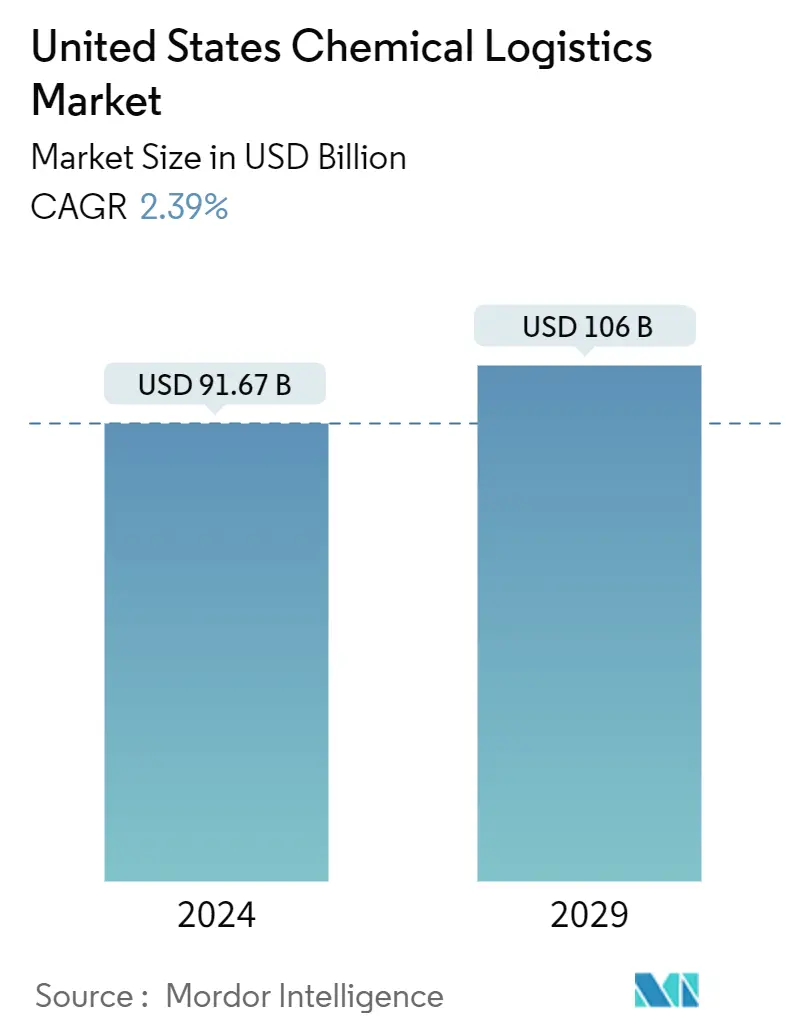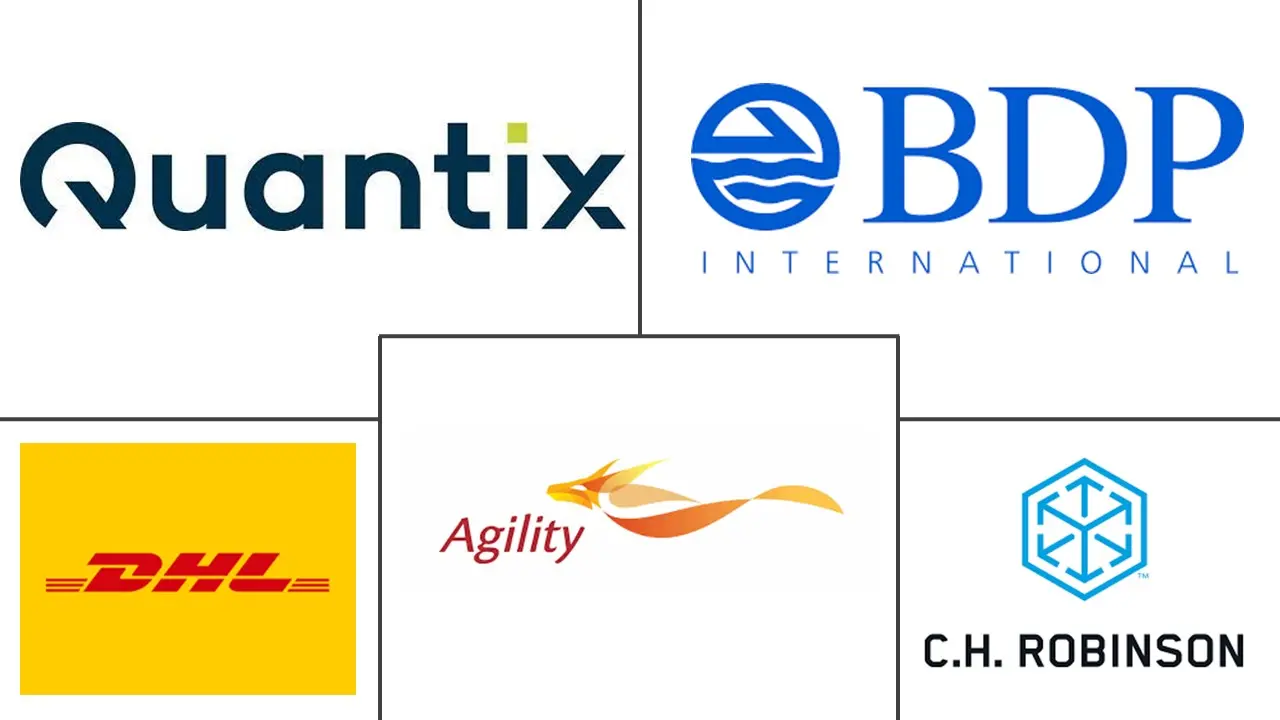Market Size of United States Chemical Logistics Industry

| Study Period | 2020-2029 |
| Base Year For Estimation | 2023 |
| Market Size (2024) | USD 91.67 Billion |
| Market Size (2029) | USD 106 Billion |
| CAGR (2024 - 2029) | 2.39 % |
| Market Concentration | Low |
Major Players
*Disclaimer: Major Players sorted in no particular order |
Need a report that reflects how COVID-19 has impacted this market and its growth?
United States Chemical Logistics Market Analysis
The United States Chemical Logistics Market size is estimated at USD 91.67 billion in 2024, and is expected to reach USD 106 billion by 2029, growing at a CAGR of 2.39% during the forecast period (2024-2029).
- The rise in chemical manufacturing is projected to move the chemical logistics market forward. An expansion in chemical production to feed diverse industries like as food production, pharmaceutical manufacture, vehicle manufacturing, and engineering leads to an increase in the demand for safe areas of transportation and distribution services. Chemical volumes in the United States, for example, climbed by 1.4% in 2021 and 3.2% in 2022, according to the American Chemistry Council, while shipments increased by 8.1% in 2021 and 8.2% in 2022. Furthermore, the government of India reports that India's chemical sector (including fertilizers and pharmaceuticals) grew by 18-23% in FY2022 and is expected to increase to USD 304 billion by 2025, with an annual growth rate of 9.3%. Therefore, the rise in chemical production is driving the growth of the chemical logistics market.
- Collaborations and partnerships have emerged as major trends in the chemical logistics business. Partnerships and collaborations are being formed by major companies in the chemical logistics market in order to develop novel and technologically improved products. For example, Arkema S.A., a specialty chemicals and advanced materials firm, will collaborate with Swiss trade tech pioneer Nexxiot in July 2021 to digitize Arkema's Isotank (Tank Container) and rail freight wagon fleets utilizing Nexxiot's cutting-edge IoT devices and intelligent cloud platform. This collaboration would provide Arkema customers with end-to-end visibility, allowing them to raise quality standards and change the entire service experience. Furthermore, in February 2021, Agility Logistics, a Kuwait-based logistics company, will join with Shipa, a US-based digital logistics platform, to build a bonded, expedited road freight network between Kuwait and the United States. This collaboration would result in a new service offering customers less-than-truckload (LTL) and full truckload (FTL) alternatives and a rapid, cost-effective way to export parcels, pallets, or goods containers.
- Chemical producers in the United States indicated that serious supply chain issues persisted far into this year and, in some cases, exacerbated. According to the findings of a recent survey released by the American Chemistry Council (ACC), transportation-related supply chain issues persisted in the first half of this year, having a long-term impact on US industrial operations. Companies indicated that supply chain and freight transportation interruptions affected their US manufacturing operations for three straight quarters. During the same time period, businesses reported being negatively impacted by persistent supply chain and freight transportation problems. Companies noted that, in addition to lost manufacturing and customer orders, higher transportation rates were exacerbated by costly workarounds such as expanded stocks, investment in more rail cars, and allocating additional people to manage shipments.
- Digitalization and the use of technology in logistics are undeniably significant phenomena that extend far beyond the chemical industry. This will continue to be true in the coming years. Years ago, discussions on digitization were dominated by vague ideas; today, technology solutions, concepts, and methods are differentiated based on their potential. In contrast to other industrial sectors, the chemical industry does not significantly outsource its logistical operations in order to adapt to a constantly changing environment. Supply chain management that is agile and adaptive, providing solutions adapted to specific markets and clients, is gaining popularity. The ability to respond to changes more quickly and stabilize the supply chain over time is enabled by increased openness through higher digitization and tighter cooperation.
